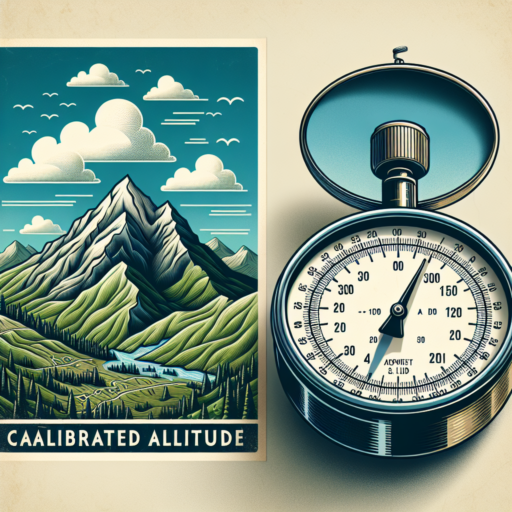Understanding Elevation: What Does It Mean?
When we talk about the concept of elevation, it’s essential to understand its fundamental definition and significance in various contexts. Elevation, in its most basic form, refers to the height or altitude of a point relative to sea level or ground level. This measurement is crucial for a wide range of activities, from construction and aviation to hiking and geography.
Elevation plays a pivotal role in determining the climate and weather patterns of a region. Regions at higher elevations tend to have cooler temperatures, due to the thinning atmosphere at altitude. This characteristic makes understanding elevation vital for agricultural planning, environmental conservation, and even for tourists planning their vacations. Knowing the elevation of your destination can help in preparing for potential weather conditions and ensuring a safe and enjoyable experience.
Moreover, elevation is not just about geographic and atmospheric considerations; it also has profound implications on human health. At high elevities, the air is thinner, meaning there is less oxygen available. This can lead to altitude sickness for individuals not acclimated to high altitudes. Therefore, grasping the basics of elevation is crucial for mountaineers, hikers, and travelers to high-altitude destinations, ensuring they can take necessary precautions to adapt safely to their environments.
How To Find Your Current Elevation
Finding your current elevation can be more important than you might think, whether for planning your hiking trips, engaging in architectural projects, or simply for the sake of curiosity. Fortunately, technology has made it incredibly easy to pinpoint your exact elevation with a high degree of accuracy. Here are some tools and methods that you can use to determine your elevation.
Using Smartphone Apps
One of the most convenient methods to find your current elevation is through various smartphone apps. Both the Apple App Store and Google Play Store offer a plethora of apps designed for this very purpose. Apps like Altimeter, My Elevation, and Elevation Find use your phone’s GPS and satellite data to give you an accurate reading of your elevation. It’s a quick and easy solution that’s accessible to nearly everyone in the palm of their hand.
Online Maps
Another accessible method is the use of online mapping services. Popular platforms like Google Maps and Bing Maps allow users to find out the elevation of not just their current location but of various points around the globe. By simply dropping a pin on the desired location, the elevation detail is displayed, providing an efficient way to gather elevation data without the need for specialized equipment.
Whether you’re an avid adventurer seeking to prepare adequately for your next outing, or a professional requiring accurate elevation details for a project, leveraging the aforementioned tools can significantly simplify the process. By tapping into the resources available through smartphone apps and online maps, you have the necessary information at your fingertips to confidently assess your current elevation.
Top Tools and Apps To Determine Your Elevation
Identifying your precise elevation has never been easier thanks to the plethora of digital tools and apps available today. Whether you’re an avid hiker, a professional surveyor, or just someone curious about the topographical specifics of your current location, there’s an app or tool designed to meet your needs. In this discussion, we’ll navigate through some of the leading options that have revolutionized the way we determine elevation in the modern era.
Mobile Apps for Elevation Measurement
The advent of smartphones has brought about a significant transformation in elevation measurement. Applications like My Altitude, Altimeter, and Altitude Using GPS leverage the GPS technology embedded in your device to give you a close approximation of your current altitude. These apps not only offer altitude information but also integrate weather forecasts, air pressure readings, and even maps for a comprehensive outdoor experience. Their ease of use and the convenience of having them accessible right from your pocket make them a top choice for casual adventurers and professionals alike.
Online Tools and Websites
Aside from mobile applications, there are numerous online tools and websites dedicated to providing elevation data. Sites like Daft Logic’s Google Maps Elevation Finder and GPS Visualizer allow users to pinpoint the elevation of any given location on the globe. These platforms are especially useful for planning purposes, allowing users to scout the elevation of future hiking trails, project sites, or even the landscape of a new home. By simply entering an address or dropping a pin on a map, these tools offer an instant read on the altitude of your selected spot.
No se han encontrado productos.
The Importance of Knowing Your Elevation
Understanding the elevation of your location is more critical than many might assume. Knowledge of your elevation isn’t just for geographers or adventure seekers; it has practical implications for everyday life and safety. This crucial piece of information impacts weather forecasts, building designs, and even health recommendations, underlining why awareness of your altitude is not to be overlooked.
Firstly, knowing your elevation plays a pivotal role in preparing and responding to weather phenomena. Elevations at higher altitudes experience different weather patterns compared to those at sea level. For instance, areas situated at higher elevations tend to have cooler temperatures and can be more susceptible to sudden weather changes, making accurate weather forecasts essential for these areas. This knowledge is critical for agricultural planning, emergency preparedness, and outdoor activities, ensuring safety and minimizing weather-related risks.
Impact on Building and Construction
When it comes to constructing buildings and infrastructure, understanding the elevation is indispensable. Structural engineers and architects must consider elevation data to ensure that buildings are designed according to the specific environmental conditions of an area. Variables such as wind speeds, snow loads, and the risk of flooding are all elevation-dependent factors that can influence building codes and designs. Proper planning and design, informed by accurate elevation data, can greatly reduce the risk of structural damage and enhance the safety and durability of constructions.
Health Implications
The elevation of an area also affects the health and well-being of its residents. High altitudes can lead to physiological changes in the body due to lower oxygen levels. Awareness and understanding of your elevation can help in taking preventive measures against altitude sickness, which is crucial for both residents and visitors in high-altitude locations. Additionally, healthcare providers can offer better advice and care when they are aware of the elevation-related health risks faced by the community.
Factors Affecting Your Elevation Reading
When it comes to obtaining precise elevation data, several underlying factors can significantly influence readings. Understanding these variables is crucial for anyone relying on elevation information, whether for recreational hiking, construction, or scientific research. Below are some primary elements that could skew your elevation results, leading to inaccuracies in the gathered data.
Atmospheric Conditions
One of the predominant factors that can alter elevation readings is the state of the atmosphere. Variations in temperature, humidity, and barometric pressure can significantly distort altimeter outputs. Altimeters, devices used to measure altitude, often rely on atmospheric pressure to gauge elevation. However, as weather conditions fluctuate, so does the atmospheric pressure, leading to potential inaccuracies if not properly calibrated or adjusted for current weather conditions.
GPS Signal Interference
In the age of digital elevation tools, GPS technology has become a cornerstone in determining precise locations and altitudes. Nonetheless, signal interference caused by various factors can impact the accuracy of GPS-based elevation readings. Obstacles such as tall buildings, dense foliage, and even geographical formations can obstruct or reflect GPS signals, leading to less reliable altitude data. Moreover, the quality of the GPS device and its ability to connect with multiple satellites can also affect the measurement accuracy.
Technical calibration and knowing the limitations of your equipment are essential steps in mitigating these effects. Mapping and navigation enthusiasts must be informed about the factors affecting elevation readings to ensure the accuracy and reliability of their data.
Elevation Maps: Navigating the Ups and Downs
Elevation maps are an essential tool for a variety of activities, including hiking, mountain biking, and city planning. These maps not only provide a visual representation of the terrain but also help us understand the topographical features of a specific area. Through the use of color gradients and contour lines, elevation maps depict the highs and lows of the land, making it easier for adventurers and professionals alike to navigate the physical landscape.
One of the key benefits of elevation maps is their ability to offer a comprehensive overview of a terrain’s elevation changes. This information is particularly useful for hikers and cyclists who need to prepare for potential challenges such as steep climbs or descents. By studying an elevation map before setting out, they can better anticipate the physical demands of their route, ensuring a safer and more enjoyable experience.
Additionally, elevation maps play a crucial role in urban planning and flood risk management. By understanding the elevation levels of different areas, planners can make informed decisions about where to build infrastructure and how to implement flood mitigation strategies. This helps in minimizing the impact of natural disasters and in creating more resilient communities.
The Science Behind Measuring Elevation
Understanding the science behind measuring elevation is essential for a wide range of scientific, engineering, and recreational activities on Earth’s surface. The process involves using various methods and technologies to accurately determine how high or low a specific point is in relation to sea level. This measurement is critical for activities such as map making, construction, and even hiking.
Traditional and Modern Techniques
Historically, elevation was measured using basic tools like altimeters and levels, which provided a direct measure of altitude from a known sea level. However, with the advent of GPS technology, measuring elevation has become much more precise. GPS systems calculate elevation by triangulating data from satellites orbiting the Earth, providing exact measurements that are invaluable for topographical mapping and navigation.
Importance of Accuracy
The accuracy of elevation measurement is paramount. Whether it’s for determining flood risk in a certain area, engineering roads and bridges, or even setting up satellite dishes, precise elevation data is crucial. Improvements in radar and laser technologies, such as Light Detection and Ranging (LIDAR), have enabled surveyors to measure elevation with an accuracy down to the centimeter, transforming how we interact with our geographical environment.
Practical Uses of Knowing Your Altitude
Understanding your altitude has a variety of practical applications, ranging from enhancing outdoor adventures to influencing the performance of your physical activities. Whether you’re a dedicated athlete, an avid hiker, or someone interested in weather patterns, knowing your elevation can offer insights into your environment and how to best navigate it.
Navigating Terrain and Outdoor Adventures
For those passionate about hiking, mountaineering, or cycling, altitude awareness is crucial. It helps in planning routes and understanding the challenges ahead. Climbers can gauge the difficulty of their ascents, while hikers may use altitude data to assess the expected terrain difficulty and oxygen availability. Furthermore, knowing the elevation can aid in predicting weather changes, as temperatures generally drop with an increase in altitude. This knowledge is essential for proper equipment preparation and safety.
Improving Athletic Performance
Athletes often seek out high-altitude areas for training to improve endurance and performance. Training at elevation increases the body’s production of red blood cells, enhancing oxygen delivery throughout the body. Knowing specific altitudes can help athletes and coaches design training programs that maximize these physiological adaptations. Additionally, understanding the altitude of race locations allows athletes to prepare effectively, potentially gaining a competitive edge.
Weather and Climate Understanding
Altitude plays a significant role in weather patterns and climate conditions. For meteorology enthusiasts and professionals, elevation data is fundamental in predicting weather changes and understanding climatic differences in various regions. Areas at higher altitudes tend to have cooler temperatures and distinct ecosystems. This knowledge is not only fascinating but also vital for agricultural planning, construction, and even choosing a vacation spot based on expected weather conditions.
Elevation and Health: What You Need to Know
Living at a higher elevation can have a significant impact on our health, with both positive and negative effects. Understanding these can help you make informed decisions about high-altitude living or travel. The thin air at high elevations means less oxygen is available. Our bodies can adapt to a certain extent, but it’s crucial to know the potential health implications.
Positive Effects of High Altitude on Health
One notable benefit of living at higher elevations is the potential for weight loss. The body’s metabolism speeds up as it works harder to supply oxygen to your muscles, potentially leading to weight loss. Additionally, higher elevations have been associated with a lower risk of heart disease. The theory suggests that decreased oxygen levels may stimulate certain genes that create new pathways for blood flow, effectively giving your cardiovascular system a workout.
Negative Impacts on Health at High Elevations
However, the adjustment to high altitude can also pose some risk factors to your health. Acute mountain sickness (AMS) is common for newcomers at elevations above 8,000 feet. Symptoms include headache, nausea, dizziness, and fatigue. Moreover, the low humidity and increased UV radiation at high altitudes can increase the risk of dehydration and sunburn, emphasizing the importance of appropriate precautions such as staying hydrated and using sunscreen.
Elevation FAQs: Answers to Your Most Common Questions
Understanding Elevation and Its Importance
When discussing the concept of elevation, many questions come to mind regarding its definition and why it matters. Simply put, elevation refers to the height of a point on Earth’s surface above sea level. It plays a crucial role in determining climate conditions, weather patterns, and agricultural practices. For example, higher elevations typically experience cooler temperatures, which can significantly impact local weather and the types of crops that can be successfully grown.
How Elevation Affects Your Daily Life
Even if you’re not climbing mountains or living in a high-altitude area, elevation can still impact your daily life in various ways. From influencing the weather you experience to affecting your physical performance during outdoor activities, elevation touches many aspects of our day-to-day experiences. Lower oxygen levels at high elevations can make physical exertion more challenging, making aclimatization a crucial aspect for those visiting or moving to higher altitudes.
Common Misconceptions about Elevation
There are several misconceptions about elevation that often lead to confusion. One common myth is that temperature changes with elevation due to proximity to the sun. However, the primary reason for temperature variation is the decreasing pressure at higher altitudes, which causes the air to cool as it expands. Understanding these scientific principles can help clarify why elevation has such a profound impact on environmental and human factors.




